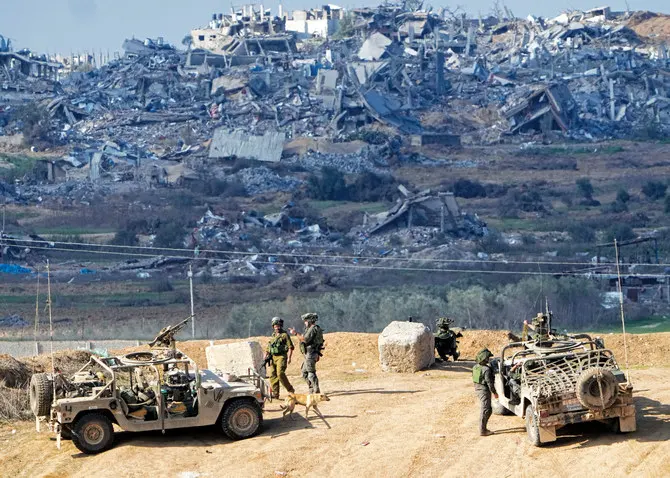Israel is sending mixed messages, announcing on the one hand that it is withdrawing some forces from Gaza, while also indicating the war will continue for many months, with a shift to more targeted operations and preparations for a full-scale conflict with Hezbollah.
Commentators are divided over the rationale behind the purported drawdown and the apparent signaling of a wider conflict, suggesting that the announcement could be the result of US pressure, economic necessity, or even an acceptance that the old strategy is simply not working.
In early January, a military spokesperson said the Israel Defense Forces would withdraw some units from the besieged Palestinian enclave as part of a shift toward “more targeted operations.”
Daniel Hagari, an IDF spokesperson, later told The New York Times that “the war has shifted a stage, but the transition will be with no ceremony; it’s not about big announcements.”
Another IDF spokesperson later seemed to suggest that, at least for northern Gaza, the bombing campaign had reached its climax, claiming that Hamas in that part of the Gaza Strip had been “dismantled.”
Jordanian analyst Osama Al-Sharif told Arab News the scaling down had “yet to be verified,” but, should it occur, would likely equate to the withdrawal of roughly 7,000 troops.
According to one military statement, the withdrawal of five brigades was intended to give “training and rest” to those who had been engaged in the ground offensive since the war began on Oct. 7.
By citing the need for training, the statement made clear that any suggestions the war will be brought to an imminent end, at least without pressure, will not be forthcoming from the Israeli side.
Indeed, an official quoted by Reuters news agency said the next stage of the offensive would “take six months at least and involve intense mopping-up missions against the terrorists. No one is talking about doves of peace being flown from Shujayea.”
Al-Sharif said the withdrawals could mean “any number of things.” Since northern Gaza is now little more than “rubble,” there may simply be an insufficient number of targets to justify their continued presence, he said.
“It could also mean that some troops are being relocated to the north, where tensions are on the rise. It is clear that Hezbollah is not seeking an escalation and is aware of the terrible cost an all-out war with Israel could bring,” he added.
Shlomo Brom, a retired brigadier general previously in charge of Israel’s strategic military planning, suggested in a recent interview with Al Jazeera that the move could have been in response to US pressure.
Certainly, the withdrawal appears to have gone down well with the Biden administration.
Three US officials told Politico the move was seen as indicative of Israeli Prime Minister Benjamin Netanyahu finally taking heed of Washington’s demands to reduce civilian casualties.—Agencies










